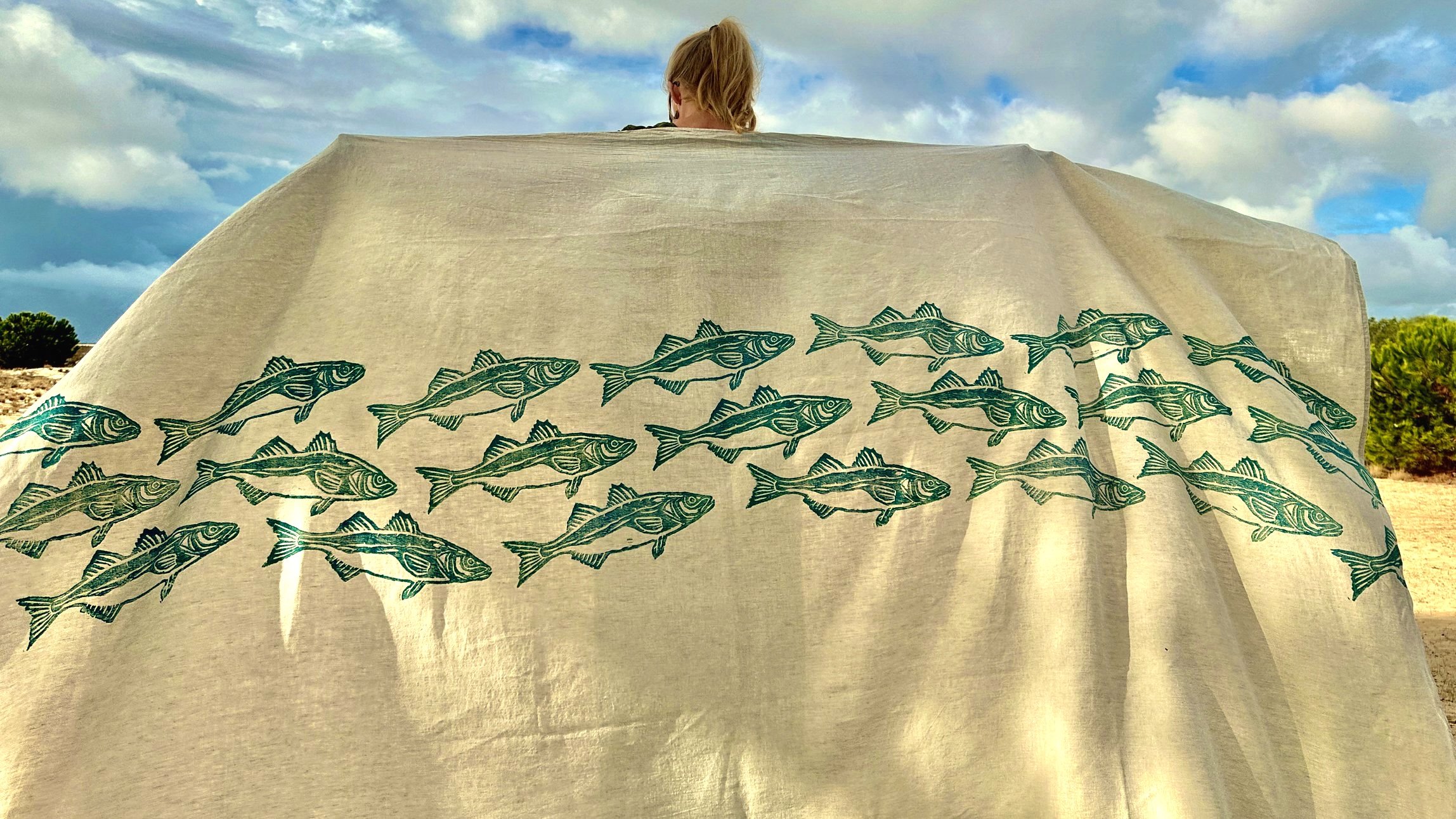
Hand-printed Linen
Block printing is one of the most sustainable art forms and dates back to ancient times in Asia and Europe.
These prints are all made by hand and the entire process has a tiny carbon footprint. It’s the simplest and slowest way of printing textile.
The linen I use is either new or vintage, so prices vary a little.
Some are in stock. And (nearly) anything can be made to order. Delivery time + 1–3 weeks, depending on your request.
-
All my inspiration comes from what lives in the ocean right here in Portugal. After designing the images I want to print, I commission a local wood artist to carve the blocks by hand for me.
-
I start by washing the linen, so it can absorb the ink really well. Then I print each design using the hand-carved wood block and a rubber hammer. The prints then have to dry in the open air for a few days.
-
After that I cure each individual print for several minutes using a super hot iron. Once that's done I wash the tablecloth by hand with an organic liquid soap to get rid of any excess ink. After this the print is completely set and it won't fade anymore. It’s not fast, but it will last, and that’s the most important thing!
-
The linen I use is 100% pure. To me there’s nothing better than the natural look and feel of real linen. It ages well and becomes more and more beautiful over time. Part of the collection is sourced it here in Portugal from a producer in Guimarães. And recently I have started printing on vintage linen.
Shop
Frequently Asked Questions
-
100% pure linen. There’s nothing better than the natural look & feel of real linen. It ages well and becomes more and more beautiful over time.
-
Some of it is sourced from a company based in Guimarães, in the north of Portugal. And recently I have started using vintage linen, sourced locally and in auctions. The quality of these vintage sheets is simply beautiful and it prints very well,
-
Yes. The core values of my linen supplier are – reduce, recycle, reuse, and eliminate. It covers everything related to the manufacturing of their products. They aim to reduce and prevent pollution and improve their environmental impact.
-
You should if you have the time. Just soak it for a while in lukewarm water with a gentle liquid (preferably organic) soap. Rinse it thoroughly with cold water and dry it outside.
-
Yes, you can. You can wash it on the delicate setting at 30 degrees with a gentle soap. And please don’t fill up the machine more than halfway as it might wrinkle a bit too much.
-
The prints might fade a little over time, but that’s also the beauty of it, as it will look like it’s been bleached by the sun and that will give it an even more beachy feel. But I don’t recommend drying it in the sun, because that might speed up that process.
-
You can use something like Vanish or any special stain remover. Better yet, you can use whatever hard soap your grandmother used to get rid of stains. For example, here in Portugal they use Clarim, or Confiança, while in France they have Savon Noir, in the US they use Fels-Naptha, and in the Netherlands, Ossengal, etc.
-
Preferably not, but I understand that you might not always have the luxury to dry it outside. Just stick to low temperatures. Remove it from the dryer when it’s still slightly damp to avoid the linen becoming stiff, and hang or lie flat to finish off the drying process.
-
I use a water-soluble ink that carries the AP-seal which identifies art materials that are safe and that are certified in a toxicological evaluation to contain no materials toxic to people or animals, or to cause acute or chronic health problems.
-
The tablecloths come in 2 sizes: 170cm x 250cm, and 170cm x 350cm.
The napkins measure 45cm x 45cm.
-
Yes, but it depends on the request! Please drop me a line here.



























